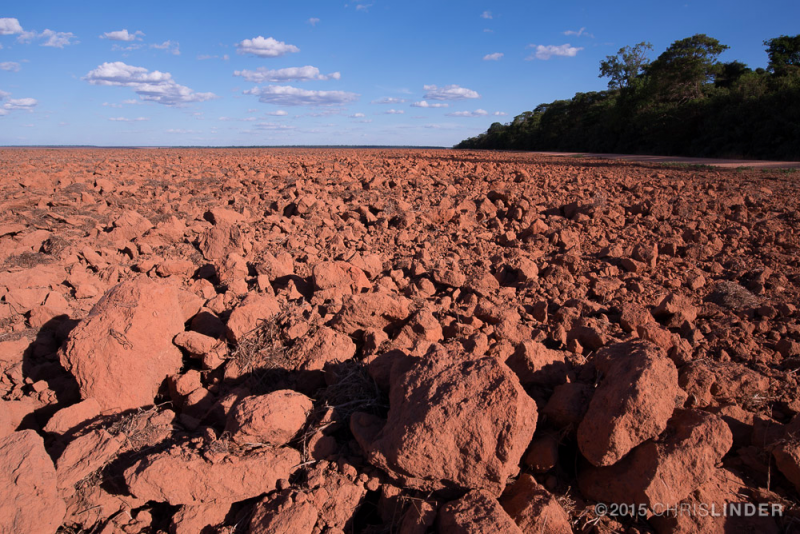More extreme weather projected in the Amazon could have global climate consequences

A new paper co-authored by WHRC scientists Philip Duffy and Paulo Brando evaluates the accuracy of current climate models and uses them to project future drought and wet periods in the Amazon. They conclude that the whole of the Amazon will confront more hydrological extremes, and that most of the region will experience much more frequent and extensive drought. These changes would have profound implications for forest structure, composition, biomass, and carbon emissions.
According to Dr. Duffy, "Historically, the main source of CO2 emissions from Amazon forests has been direct human action, especially deforestation. However, in the future, climate change may cause large emissions that result from changes in the large-scale environment rather than from direct human action, and hence are much more difficult to control. This study, based on 35 climate models, suggests that future climate change will increase the frequency and geographic extent of meteorological drought in most of Amazon. This may contribute to forest degradation and increased emissions of CO2 to the atmosphere, amplifying global warming."
This past year, Brazil has endured drought in Sao Paulo and record-high floods in Acre and Rodonia, showing that hydrological extremes are already affecting the lives of millions in Brazil. These extremes are expected to become more frequent according to Dr. Brando, "The best climate model simulations predict extreme periods of dryness and wetness across different parts of the Amazon and a longer dry season. We know that these results are important for forest dynamics, forest fires, food production; river transportation, hydroelectric power and flooding. However, we are still figuring how important they are. "
The team of scientists led by Dr. Duffy analyzed the properties of recent and future meteorological droughts in climate models used by the Intergovernmental Panel on Climate Change (IPCC) and found they accurately reproduce mechanisms that have produced historical droughts. The models predict different outcomes in the eastern and western Amazon - more frequent droughts are expected in the east, while less frequent droughts are expected in a small part of the region located in the west. Collectively, the area of the Amazon affected by mild and severe drought is expected to double and triple respectively by 2100 and increased wetness is expected after 2040. Although there are uncertainties associated with model simulations far into the future, the team concludes that current greenhouse gas emissions will increase the likelihood of extreme weather that will negatively impact Amazonian forests.
For Dr. Paulo Moutinho of the Amazon Environmental Research Institute (IPAM), "Beyond the implications for the Amazon forest related to climate change, this important study represents a clear alert to Brazil and other Amazonian countries that only forest conservation on a large scale will reduce a risk of a forest and regional agriculture collapse in the future."
More information: Projections of future meteorological drought and wet periods in the Amazon, PNAS, www.pnas.org/cgi/doi/10.1073/pnas.1421010112
Journal information: Proceedings of the National Academy of Sciences
Provided by Woods Hole Research Center



















